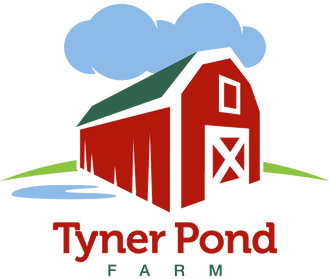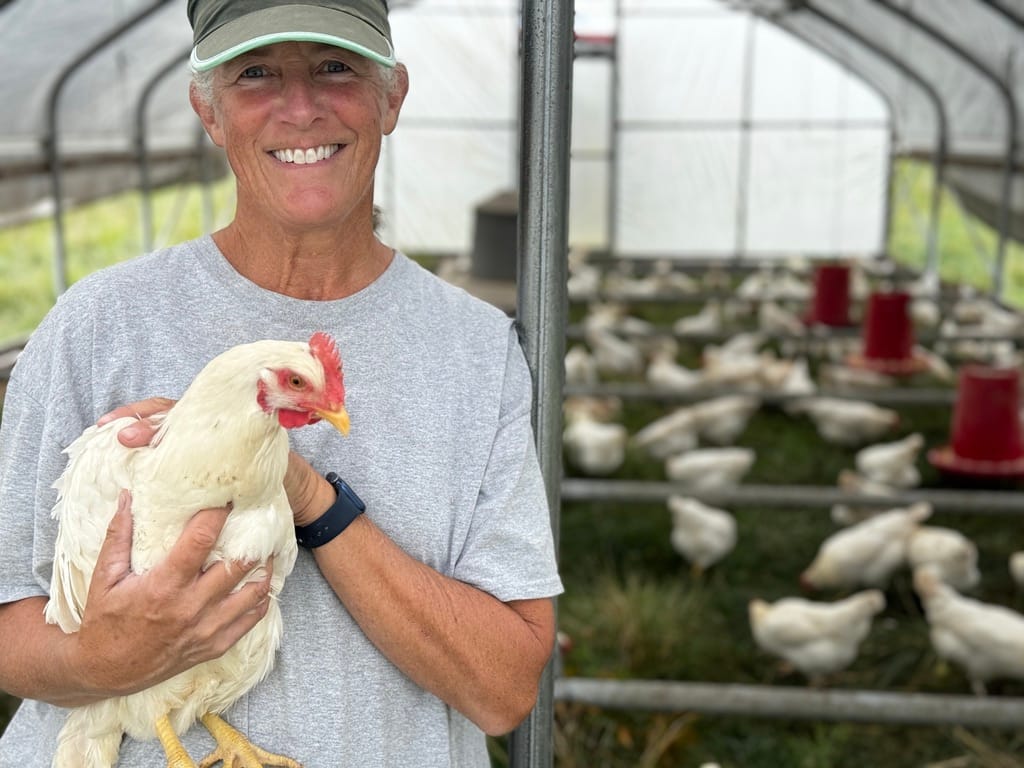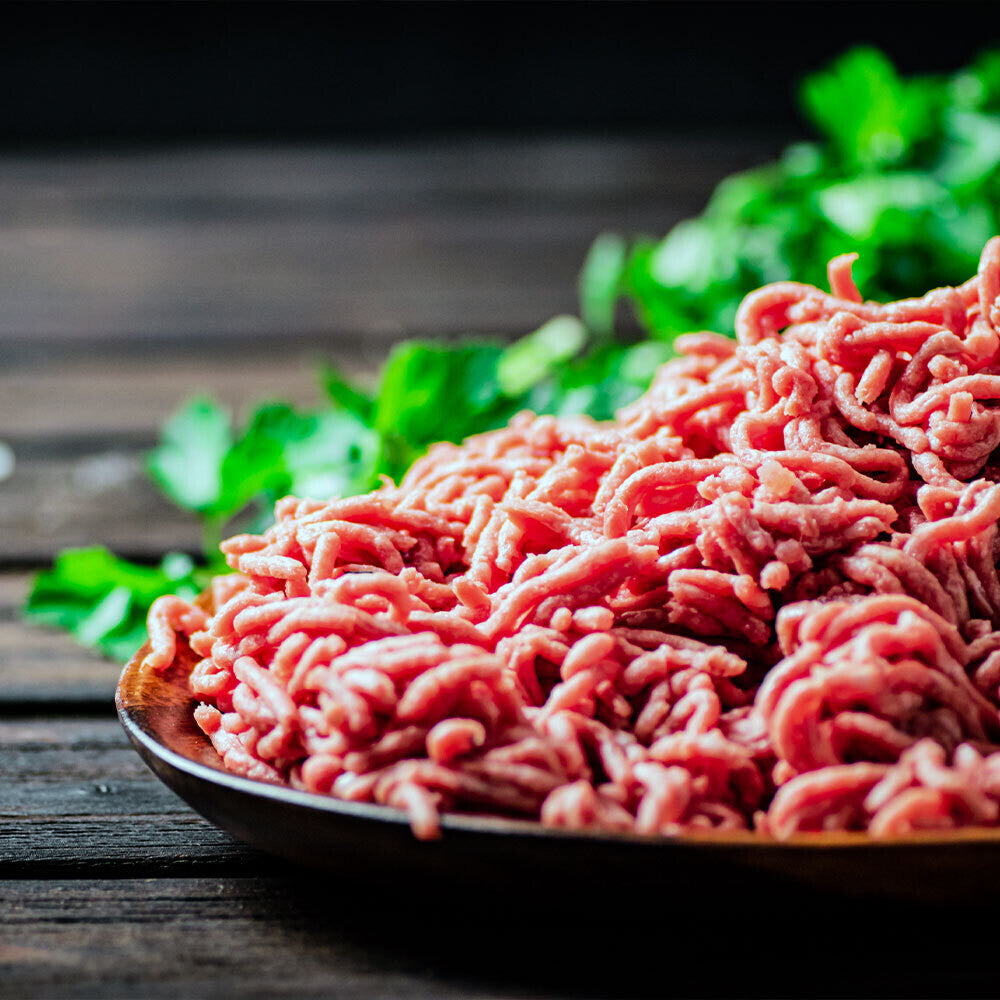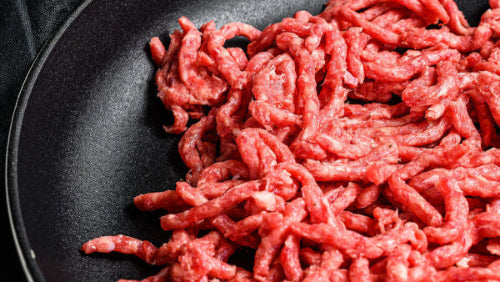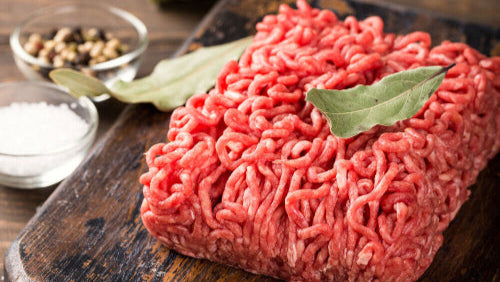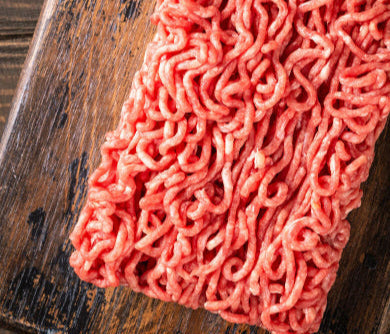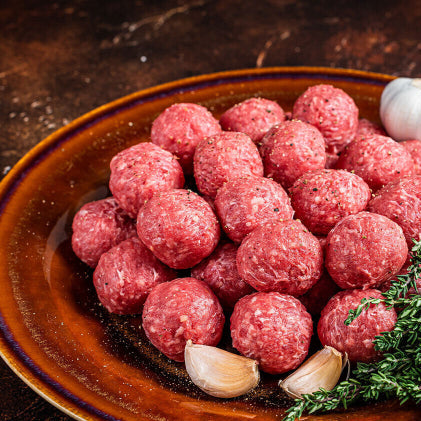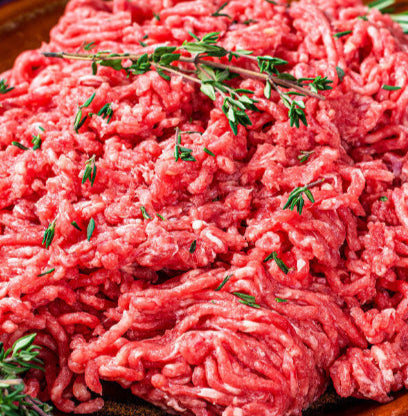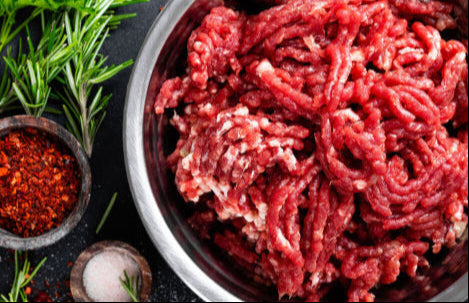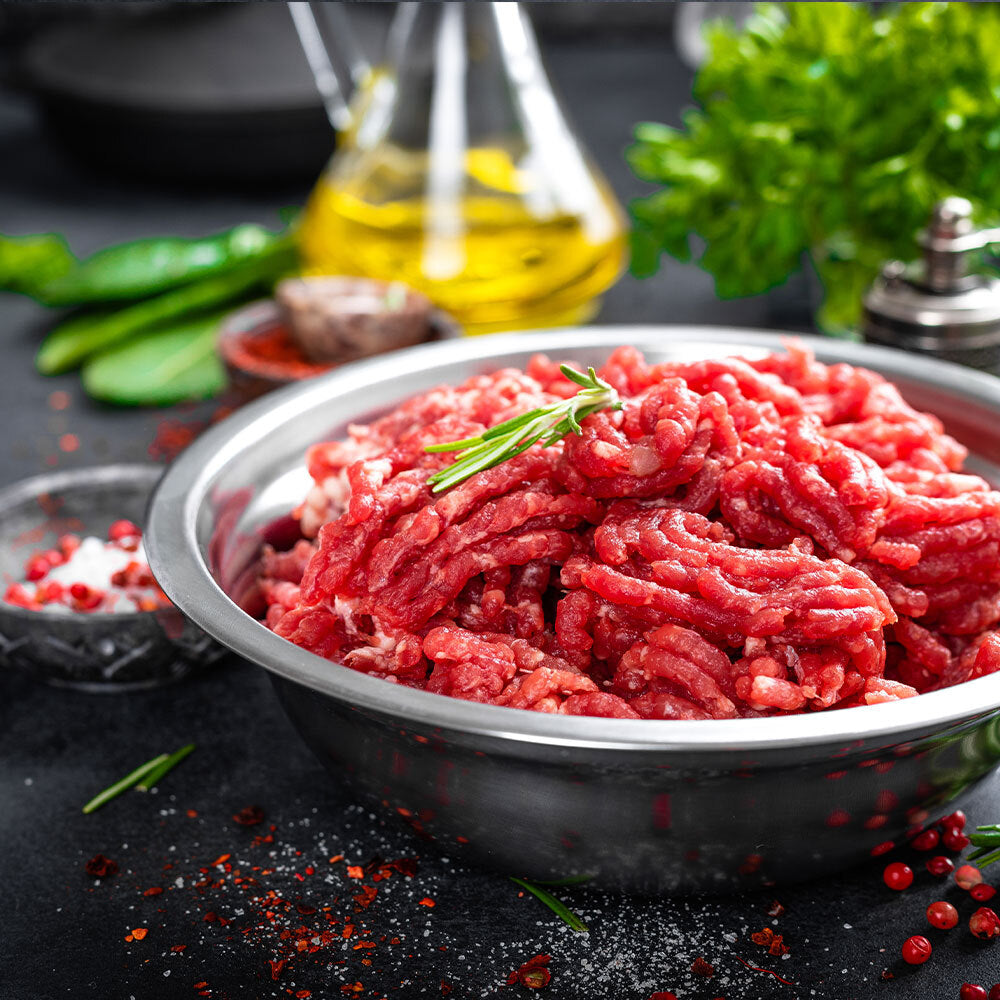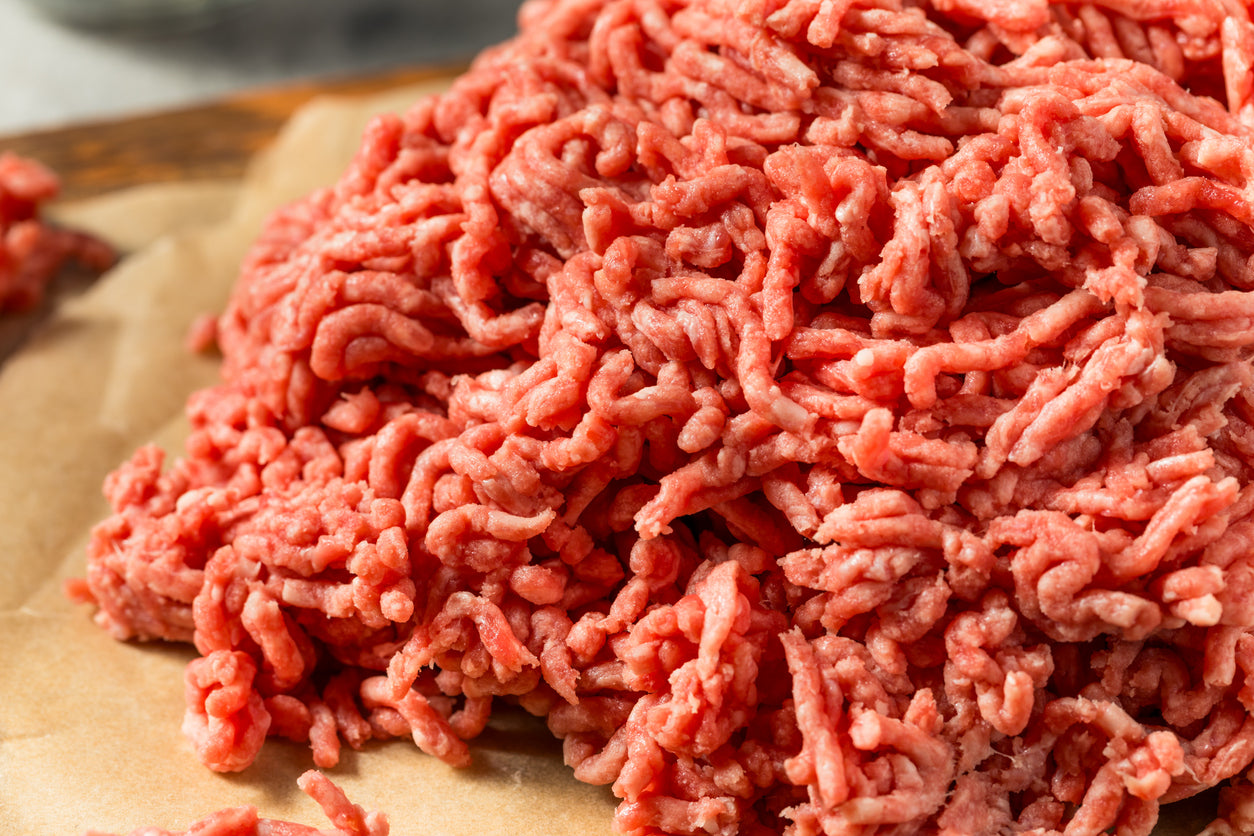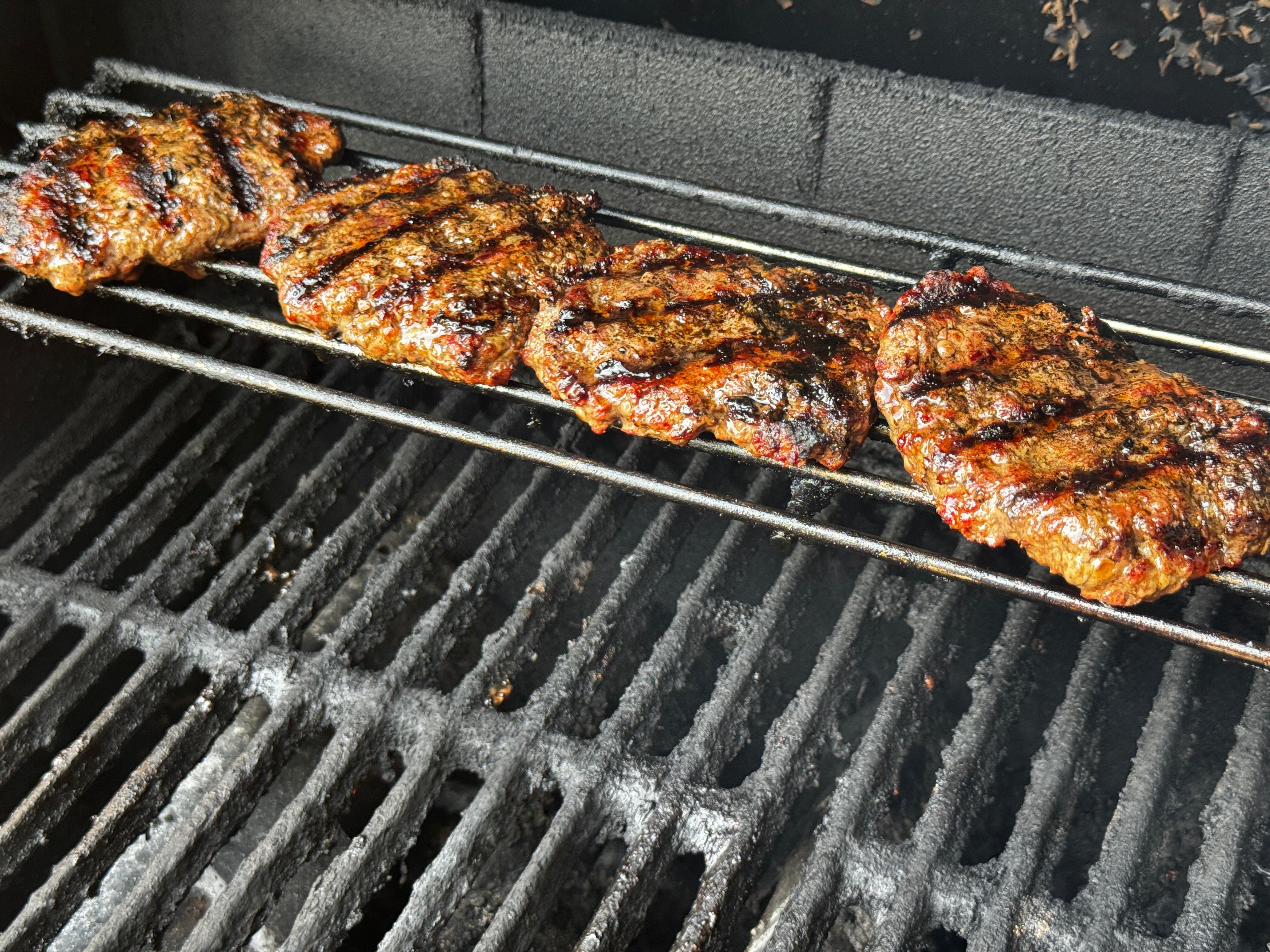
My Journey with Trophic Exchange: Why Tyner Pond Farm Does Things Differently
Tyner Pond Farm & "Trophic Exchange"
The concept of "trophic exchange" wasn't even on my radar until I picked up Candace Savage's book, "Prairie." Her vivid descriptions of how energy flows through grasslands, from sunlight fueling tiny plants to mighty predators at the top of the chain, completely sparked my imagination. It left me thinking about our farm in a whole new way. Herbivores are foundational to
Herbivores are foundational tothe Trophic Exchange We all know actions have consequences, but often they're unseen - playing out beneath the surface of our pastures. I realized those choices we make on how we holistically graze our cattle, whether or not we rely on antibiotics or chemical fertilizers...it all has a ripple effect. They aren't isolated decisions; they impact this incredible, vibrant, but easily disrupted exchange of energy that's been happening for millennia. I want to share what I've learned, and not just the big picture of trophic exchange, but how easily we can accidentally throw it off balance. The good news is, the choices we make on our farms have power - not just to harm, but to restore and build soil health and strengthen this magnificent dance of life.
 Lions, Zebras & Grass..The Trophic Exchange
Think of the African savanna - a lion stalking its prey, a zebra grazing on lush grasses. That interaction is a classic example of trophic exchange in action. But what exactly is trophic exchange?
Simply put, it's how energy moves through an ecosystem. The sun fuels the grass, the zebra eats the grass, and the lion eats the zebra.
Here at Tyner Pond Farm, we see trophic exchange happening every day. It's the foundation of our holistic management approach. The sun's energy nourishes our pastures, our cattle convert that energy as they graze, and that, in turn, creates healthy meat for our community.
Lions, Zebras & Grass..The Trophic Exchange
Think of the African savanna - a lion stalking its prey, a zebra grazing on lush grasses. That interaction is a classic example of trophic exchange in action. But what exactly is trophic exchange?
Simply put, it's how energy moves through an ecosystem. The sun fuels the grass, the zebra eats the grass, and the lion eats the zebra.
Here at Tyner Pond Farm, we see trophic exchange happening every day. It's the foundation of our holistic management approach. The sun's energy nourishes our pastures, our cattle convert that energy as they graze, and that, in turn, creates healthy meat for our community.
What exactly is the Trophic Exchange?
It All Starts with the Sun
 Sun is first rung of the Trophic ladder
The sun is the ultimate energy source for life on Earth. Plants, like the grasses in our pastures, work through photosynthesis. They capture the sun's energy and turn it into food for themselves - this is where the magic of trophic exchange begins. Trophic levels are like rungs on a ladder, representing the different steps in the flow of energy.
Sun is first rung of the Trophic ladder
The sun is the ultimate energy source for life on Earth. Plants, like the grasses in our pastures, work through photosynthesis. They capture the sun's energy and turn it into food for themselves - this is where the magic of trophic exchange begins. Trophic levels are like rungs on a ladder, representing the different steps in the flow of energy.
The Trophic Exchange starts at the bottom with:
- Producers: These are the powerhouses! Plants, like the grasses in our pastures, make their own food using sunlight through photosynthesis.
- Consumers: Animals get their energy by eating other organisms.
-
- Primary consumers (herbivores): Think of our cattle here at Tyner Pond Farm. They munch on the grass, getting energy from the plants.
- Secondary consumers (carnivores): Imagine a red-tailed hawk swooping down to catch a field mouse. The hawk gets its energy by eating the mouse, which ate the grass.
- Decomposers: These play the most important role. Bacteria, fungi, and insects in the soil break down dead plants and animals. Decomposers are critical in order to release nutrients back into the soil, which new plants can then use to grow, starting the whole cycle again.
A Delicate Balance
A strong trophic exchange hinges upon a healthy relationship between producers, consumers, and decomposers. It's a symbiotic system, where each part depends on the others. Plants need healthy soil teeming with decomposers to thrive. Our cattle need these nutritious plants to maintain their health, and a productive pasture supports a diversity of other life. When one part of this exchange is disrupted, like soil health through antibiotic overuse, the ripple effects reach all levels of the ecosystem. Amy in the role of predator
Amy in the role of predator
How Holistic Management Supports Trophic Exchange
At Tyner Pond Farm, we understand that a healthy ecosystem relies on strong trophic exchange. Our holistic management practices are all about maximizing that energy flow:- Rotational grazing: By moving our cattle frequently, we mimic the way wild herds would graze. This gives grass time to rest and regrow, fueled by sunlight, before being grazed again.
- Focus on Soil health: Healthy soil teems with decomposers ready to recycle nutrients. This nutrient boost feeds the grass, giving our cattle the very best.
Antibiotics and the Hidden Harm to Soil Health
 To Be Honest, Most Antibiotics are given continuously in feed and water
To Be Honest, Most Antibiotics are given continuously in feed and water
Antibiotics have unintended consequences for the entire ecosystem. Here's why:
A significant portion of antibiotics given to livestock is not fully absorbed in the gut. Between 30 -90% gets excreted in their urine and manure.Here's a breakdown of how antibiotic residues excreted by cattle impact soil biology and why it matters:
- Unintended Targets: Antibiotics in manure don't just target the harmful bacteria that caused the animal's illness. They also harm beneficial bacteria and other microbes in the soil that perform vital functions.
- Disrupted Nutrient Cycling: Many soil microbes are essential for decomposition, the process of breaking down organic matter (like manure) into nutrients plants can use. Reduced microbe populations slow down this cycling, meaning fewer nutrients are readily available for plant growth.
- Reduced Biodiversity: Healthy soil thrives on microbial diversity. Antibiotics can suppress certain species of microbes as well as fungi, creating imbalances in the soil ecosystem. These imbalances make the soil more vulnerable to pathogens and less supportive of plant growth. (And actually lead to needing even more antibiotics)
- Indirect Effect on Plant Health: With a hampered soil community, plants struggle to get the nutrients they need. This can lead to weaker plants more susceptible to pests and diseases, creating a ripple effect throughout the pasture system.
- Antibiotic Resistance: Exposing soil microbes to antibiotics creates an environment where resistant bacteria can thrive. Some worry these resistant bacteria may eventually become a human health concern if agricultural practices are not improved.
Summary of the Negative Implications of Herbivore Antibiotics:
- Reduced Pasture Productivity: Poor soil health directly impacts the quality and quantity of grass growth, hindering cattle health and the carrying capacity of a farm.
- Environmental Harm: Reduced biodiversity in soil harms beneficial insect populations and can have wider consequences for wildlife dependent on a healthy ecosystem.
- Unintended Targets: Antibiotics don't just target the harmful bacteria - they can also eliminate beneficial bacteria and microorganisms living in the soil and in the cow's gut. These microbes are decomposers, the cleanup crew of the trophic exchange!
- Nutrient Cycling Breakdown: Fewer decomposers mean nutrients take longer to recycle from cow manure back into the soil. This reduces grass growth (hurting our producers) and makes the pasture less nutritious for our cattle (harming our primary consumers).
- Wider Impacts: A less productive pasture can't support as many other living things. Fewer grasses create less food and shelter for insects, which impacts birds and other wildlife further up the food chain.
Our Choice for Holistic Health
At Tyner Pond Farm, we believe in minimizing antibiotic use whenever possible. Supporting a healthy balance of microbes in the soil through holistic management helps build healthier cattle and promotes the well-being of the entire trophic exchange. That's how we produce nourishing food while fostering a truly balanced, thriving ecosystem.A Delicate Balance
A strong trophic exchange hinges upon a healthy relationship between producers, consumers, and decomposers. It's a symbiotic system, where each part depends on the others. Plants need healthy soil teeming with decomposers to thrive. Our cattle need these nutritious plants to maintain their health, and a productive pasture supports a diversity of other life. When one part of this exchange is disrupted, like soil health through antibiotic overuse, the ripple effects reach all levels of the ecosystem.Chemical Fertilizers: A Short-Term Fix with Long-Term Costs
 Tractor sprayer, spraying fertilizer on a field
While chemical fertilizers can quickly boost plant growth, they often come with downsides for soil health and the broader trophic exchange.Here's how:
Tractor sprayer, spraying fertilizer on a field
While chemical fertilizers can quickly boost plant growth, they often come with downsides for soil health and the broader trophic exchange.Here's how:
- Disrupting Soil Life: Chemical fertilizers harm beneficial soil organisms like bacteria and fungi. Fewer decomposers disrupt the smooth flow of nutrients that naturally fuel plant growth.
- Reduced Nutritional Value: Plants relying on chemical fertilizers may appear large and lush, but often lack the complex nutrients found in pasture grasses grown in healthy, microbe-rich soil. This impacts the nutritional quality of meat from grazing animals.
- Water Pollution: Excess fertilizer that's not used by plants runs off fields, polluting waterways. This disrupts aquatic ecosystems and can harm beneficial aquatic life, upsetting the flow of energy in a different environment.
Holistic Management for Long-Term Success
At Tyner Pond Farm, we focus on building long-term soil health to create a truly self-sustaining system. Healthy soil, fueled by decomposers recycling nutrients, reduces the need for chemical fertilizers. That protects soil life, leads to richer and more nutritious grasses, and supports a more vibrant trophic exchange overall. Tyner Pond Farm Grassfed Beef
Let's break down why chemical fertilizers can hinder the nutritional value of plants and how that translates to the meat we eat:
Tyner Pond Farm Grassfed Beef
Let's break down why chemical fertilizers can hinder the nutritional value of plants and how that translates to the meat we eat:
- The Fertilizer "Shortcut": Chemical fertilizers usually focus on delivering just a few primary nutrients- mainly nitrogen, phosphorus, and potassium (NPK). It's like giving plants fast food - lots of energy for quick growth, but lacking the complexity of a balanced diet.
- Missing Micronutrients: Healthy soil teems with a network of bacteria, fungi, and other microbes. These create complex relationships with plants and help them access a whole range of micronutrients (think of them as vitamins for plants!). These can include trace minerals like iron, zinc, and calcium. Plants struggling to gather these naturally don't accumulate them at the same levels.
- From Pasture to Plate: While cattle grazed on chemically fertilized pastures might grow large, the nutritional profile of their meat can be impacted. Studies suggest this type of forage decreases the amount of antioxidants, healthy fats (like omega-3s), and certain vitamins found in the meat compared to cattle raised on more naturally-fertilized pastures.
- It's About More Than Just Size: Size and quick growth spurred by chemical fertilizers can create the illusion of quality, but true nourishment involves those more complex micronutrients.
- The Holistic Advantage: Managing pasture for soil health naturally improves the diverse nutrients plants take up. Cattle access this wider range of nutrition, translating to richer quality meat for us.
Tags:
Previous post
Easy Grassfed Herb and Garlic Slow Cooker Beef Roast
Next post
